pandemic
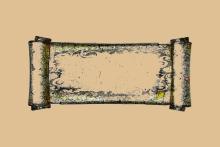
IN THE EARLY days of the pandemic, I started a death scroll. Not to be confused with “doomscrolling” (a malady related to one’s smartphone), my death scroll was a physical length of paper on which I penned names and death dates as I learned of them.
Across the top I scrawled: “Blessed are you, Lord Our God, Who Is Keeper of the Book of Life. Today, we learned that Sister Death called ...” On March 13, 2020, I wrote the first name: Barbara Clementine Harris. A towering figure in the American church, Harris registered Black voters in Mississippi in the 1960s, marched from Selma to Montgomery in 1965, and was one of the first 11 women “irregularly” ordained as Episcopal priests in 1974 and the first female bishop in the Anglican Communion. But, because of the COVID lockdown, no churchwide memorial service was held for her.
Pandemics bring death. And, as Christians, it’s impressed upon us to remember. Remember the Sabbath. Remember that your ancestors were slaves in Egypt. Do this in remembrance of me. Remember my chains. But ... I have a very bad memory. So, I made the scroll. When I stopped collecting names in late 2022, my scroll held 36. How many names would your scroll hold?

Let’s be clear: Neither Title 42 nor Biden’s new policies meet the biblical standard of “welcoming the stranger,” which for us includes thousands of migrants at the U.S.-Mexico border seeking refuge from violence and extreme poverty.

This spring, we’ll gather for a third time
since we first lost our forebears, martyrs to a cause
they did not choose for themselves.
Beloved grandmothers spent their last nights alone
in crowded hospital rooms while officeholders
deliberated over the what, not the what now or the how.

IN 1633, THE Bavarian village of Oberammergau experienced a miracle. The villagers had promised God they would stage a reenactment of the passion of Christ if they were spared from the plague. They were spared. Nearly 400 years later, people continue to come from around the world to see these performances. But there’s a problem. Oberammergau’s passion play is one of the most antisemitic artworks in European history. Adolph Hitler viewed the play in 1930 and 1934 and recognized its propaganda value for his own plan of Jewish genocide.
Christians today may still perpetuate anti-Jewish racism throughout our passion narratives — particularly when the gospel of John forms the core of the lectionary. Unlike the others, John’s gospel frequently labels anyone opposing Christ as “the Jews.” Most of us realize that the writer is naming a subset of religious leaders. But when we repeat the phrase throughout Easter, we can subconsciously reproduce and amplify antisemitism found in the Christian theological imagination.
Recently, rather than ignoring the passion play’s antisemitism, the director worked with the American Jewish Committee to rid the play of anti-Jewish tropes. The 2022 Oberammergau passion play told a more complete Easter story. “The Jews” now include Jesus and his followers too. Jesus lifts a copy of the Torah to pray the Sh’ma Yisrael. Hebrew prayers were recited over the Last Supper. Mary is greeted as the “rabbi’s mother.” Significantly, the updated version calls Christians to repent for how we’ve failed our foundational sibling relationship.
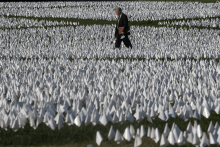
Since the pandemic upended life as we knew it over two years ago, I have found the apostle Paul’s letter to the church at Corinth particularly instructive. In 1 Corinthians 12, Paul provides one of the most poignant metaphors in all of scripture, comparing the health of the church to that of the human body — a comparison that also applies to the health of our broader communities, nation, and world.
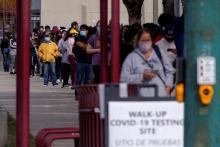
In January 2020, COVID-19 was first detected in United States. In the two years since, we’ve experienced death and mourning on a massive scale, lost relationships over politically driven misinformation about the deadly virus, and felt constant fear and anxiety as we try to protect ourselves and our loved ones. This trauma has shaken many to their spiritual core in ways that will leave lasting effects. As the omicron variant rips through communities, I’ve heard many people express feelings of resignation. Helplessness. Hopelessness. And given how trauma works, we shouldn't be surprised when notice ourselves experiencing these feelings, even in our churches.
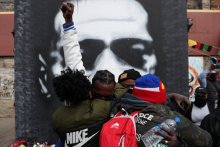
A collection of photos that defined 2021.
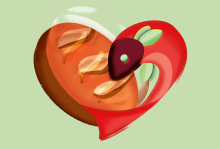
STROLLING THROUGH MY neighborhood in East Harlem recently, I noticed whole blocks that felt almost desolate. Along 3rd Avenue I saw stretches of sidewalk once bustling with small businesses, street vendors, the smell of incense, and the sound of West African music, now abandoned amid the echoes of what was.
As a citizen of these barrio streets, the feeling I get is a form of ecological despair. And while some of these places of disinheritance were there before, it seems to have gotten worse during the COVID-19 pandemic. The glitz of gentrification fails to mask increased homelessness, open substance use, and the fatigue many parents and caretakers have experienced, even after the mandated quarantine ended.
At the height of the pandemic, I remember someone telling me, “We’re all in the same water but not the same boat.” Yes, it’s true, the privileged and those who are poor have been hit by the pandemic in multiple ways, but the impact is always felt differently among the most vulnerable. Yet here we are together—a part of the same ecosystem. I’ve done funerals for the poor and the privileged alike; grief has a way of making us feel more tender and more human.
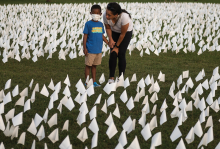
Suzanne Brennan Firstenberg, creator of “In America: Remember,” is a social practice artist in the Washington, D.C., area. She spoke with Sojourners' Jenna Barnett.
“[‘IN AMERICA: REMEMBER’] was a vast field of flags: one for each person who died from COVID-19. The installation began [in mid-September] when there were 666,624 deaths. Each day, I changed the number on the large sign. When the installation closed [in early October], there were 701,133 deaths.
People came thousands of miles to write words on 5-by-4-inch poly film attached to a steel stem. Each time somebody dedicated a flag, they were my co-artists. To have the privilege of watching strangers console strangers—that was the magic of the place. It was important to us to make sure that people had equal access to this art. Many people who had suffered losses could not afford the time or the expense of coming. So, we announced that the art was coming two months in advance so that people could plan. And we made sure that people could dedicate flags through our website.

Christianity leaves a lot to interpretation — both biblically and apparently, culinarily.

The absurd hope found in Zillow-ing during the pandemic.

HOW HAS THE pandemic changed you? This question can feel loaded, as though our answers should contain revelatory insights or transformational changes in our mindsets or lifestyles. My answers have varied. Since the pandemic forced my intense travel schedule to come to a screeching halt, I’ve realized just how unsustainable that schedule, with its impact on my family life, had become. I look forward to returning to traveling soon, but I am determined to be much more selective about it. I also often reflect on the ways that my family deepened our love for nature during the pandemic, breathing in the beauty of God’s creation. These are just a few of my answers.
But for some of us, the question elicits anxiety about going back to the broken “normal” of pre-pandemic times. For many, lurking behind the question is a recognition that some of the ways COVID-19 has changed us may not be for the better, and some of our struggles during this time may not simply go away because we are vaccinated and can now resume social activities. Sadly, the pandemic amplified a preexisting mental health crisis in this nation. A New York Times article by organizational psychologist Adam Grant popularized a new term: “languishing,” which describes the state of feeling aimless, joyless, and unfocused. This captures a wide continuum between flourishing and full-scale depression. Languishing can also have a deep spiritual dimension: We feel a sense of spiritual fatigue and emptiness or even feelings of abandonment and anger toward God. They can be compounded by the inability during the pandemic for most of us to experience in-person fellowship and worship.
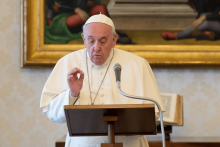
In a seven-point preface to the decree explaining why action was needed now, Francis said the pandemic "has negatively affected all the sources of income of the Holy See and the State of Vatican City."

MARCH IS MY favorite month of the year and not simply because of the renewal of spring. As a college basketball fanatic, it is also because of the NCAA men’s tournament, otherwise known as March Madness. My passion for college hoops began when I moved to Tucson before my junior year of high school and started attending every home game at the University of Arizona, where college basketball is an obsession. In light of the hardship and devastation that this pandemic has inflicted, it feels overdramatic to say that my spirits were crushed last March when the NCAA made the necessary decision to pull the plug on the March Madness tournament. This year, the NCAA plans to host the tournament in a bubble, following the model of last summer’s NBA playoffs. The tournament will feel incomplete without screaming fans, but the fact that it will take place at all offers a signal that the beginning of the end of the pandemic is within sight.
As our nation moves out of a long, dark winter of COVID-19 infections, hospitalizations, and deaths, we can all use a dose of something to look forward to, even if those somethings don’t look identical to life before the pandemic. A bubbled March Madness feels like a fitting metaphor to the critically important space we will be in as vaccines help us turn the tide against this virus and toward a new normal. But the journey between the spring and fall will likely feel like a long and tortuous one, particularly if COVID-19 fatigue devolves into resentment, resignation, or at worst nihilism. With the advent of more contagious and possibly more deadly strains of the virus, social distancing and mask-wearing will be even more necessary to transition from the wilderness of the current pandemic into the promised land of a post-COVID-19 world.

Lent is always a solemn period of penance, reflection, and prayer, but this year that reflection is different. Though vaccinations are on the rise, the virus has killed nearly 500,000 people in America and forced many more into isolation. For many Christians, Lent in 2021 has also taken on a new significance beyond the requirements of social distancing.

Biblical roots of justice
The founding story in the Bible tells of a diverse group of freedom fighters who have been on the march since the burdens of Egyptian slavery and scarcity got to be too much, since leaders like Moses, Aaron, Miriam, and many others—named and unnamed—came forward to say, “It doesn’t have to be this way.” And God sent plagues and pandemics that only hardened the heart of the ruling authorities, who doubled down on misery, dispossession, and militarization.

We long for Silent Night in crowded pews, by candlelight.
May we who stay at home now find your Christmas blessing.

So as we participate in Advent this month, the Old Testament story of Job may be a helpful text to explore. Job addresses the enigma of suffering head-on, mincing no words but also not really answering the question of why we suffer. Perhaps, though, the simple freedom to question God and mourn our losses is just what we need this Christmas.
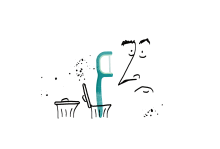
WALKING THE EMPTY streets of Washington, D.C., my hat pulled down against the wind and my face obscured by a fabric mask, I can’t help but notice the unsightly trash on the sidewalk. Lately, the usual litter of the nation’s capital—gum wrappers, empty fast-food containers, unsigned legislation for the common good—now includes a new item carelessly dropped. The formerly ubiquitous cigarette butt has been replaced by the discarded flossing pick.
While it’s good that many people have stopped smoking, must they now floss and toss? Old cigarette butts might eventually compost into something useful to the earth. But plastic devices for cleaning teeth will be with us—much like a 6-3 Supreme Court—long after any possible use to society. And they’re disgusting to look at. (Floss picks, not the Supreme Court, although [name withheld] is looking well past his freshness date.)
My guess is that former smokers have switched to floss devices to keep alive the rituals they so loved. And who can blame them? It’s so satisfying to take a pick from a fresh pack, hold it just so between thumb and forefinger, and go to town on what’s left from lunch. Maybe there should be designated areas outside office buildings where flossers could gather during breaks, bonding while prying out that troublesome piece of bagel and complaining about the boss. All the while looking relaxed and worldly as they move from tooth to tooth, then casually tossing the pick to the ground, followed by stepping on it with practiced vigor. Unfortunately, there’s a lot of peer pressure to floss in public, but just because the cool people are doing it doesn’t mean you have to. Think of the children.
